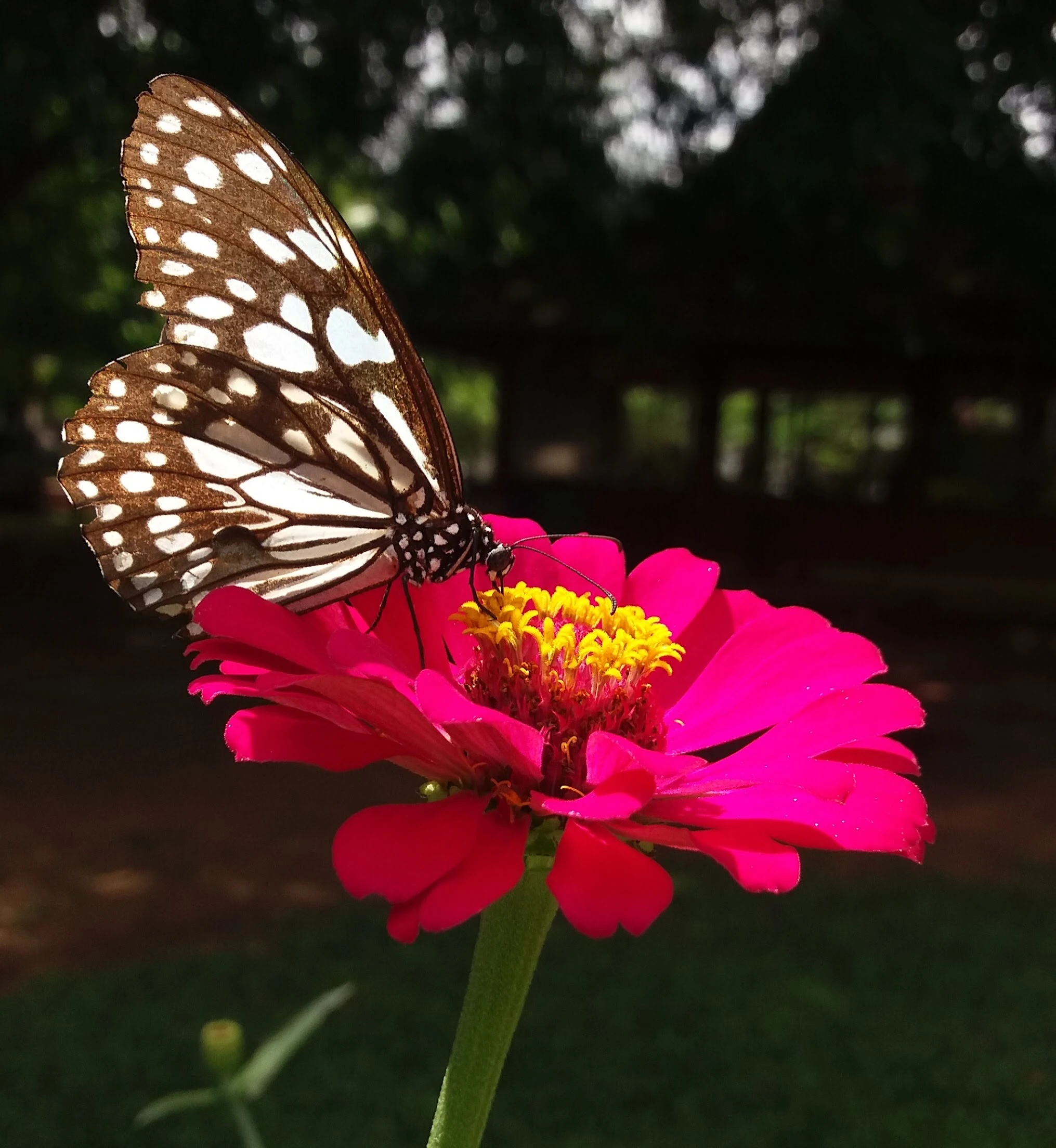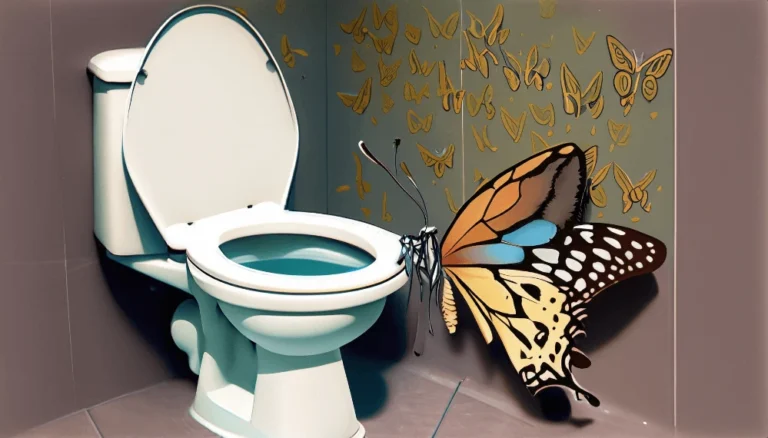Discovering The Butterfly Tongue (Proboscis): Complete Guide
Butterflies use a unique tool called the proboscis instead of a traditional tongue. The proboscis is a long, flexible tube that butterflies uncoil to sip nectar from flowers. The proboscis has two tubes and taste sensors. These taste buds help butterflies know if their food is good.
In this article, we dive deep into the world of the butterfly tongue (proboscis). We’ll explore its structure, its use, and why it’s so important. You’ll discover amazing facts about butterflies and learn how they’ve changed over time to live in different environments.
Table of Contents
Demystifying Myths: Do Butterflies Have Tongues?
When you see a butterfly resting on a flower, it’s easy to assume they might not have a tongue at all. After all, how do they eat without one? Many believe that butterflies don’t have anything resembling a tongue. This, however, isn’t the case.
Brief on the Actual Mouthparts of a Butterfly
Butterflies don’t have tongues like humans or other animals. Instead, they use a special structure called the proboscis. This proboscis works like a long, flexible straw. When not feeding, a butterfly coils up its proboscis.
When it wants to drink nectar, it unrolls the proboscis and dips it into flowers. This incredible tool lets butterflies feed on the sweet nectar of flowers.
The Butterfly’s “Tongue”: Understanding the Proboscis
Definition and Basic Description
The proboscis sits right in the middle of a butterfly’s head. Two tubes make up the proboscis. When a butterfly isn’t eating, these tubes coil up close to its head.
When it’s time to eat, the butterfly uncoils these tubes to form a straw-like structure.
Historical Context: Discovery and Naming Evolution
Years ago, scientists looked closely at butterflies and saw this special straw. They decided to call it “proboscis”, a word from Latin that means ‘feeding’. As more scientists studied it, they found out just how important the proboscis is.
It helps butterflies survive by letting them drink nectar. Because of this, lots of research today looks into the proboscis and how it works.
The Anatomy of the Proboscis
Detailed Breakdown of its Physical Structure
The proboscis is an amazing part of a butterfly’s body. When you look closely, you see that two tubes make it up. These tubes can stick together or separate.
Tiny muscles and fibers help the tubes to move and coil. On the inside, these tubes act like straws, helping butterflies pull in liquid food.
Comparison with Mouthparts of Other Insects
Now, butterflies aren’t the only insects with special mouthparts. For example, bees have mandibles to chew and ants have pincers to carry food. But the butterfly’s proboscis is unique.
Unlike a bee’s or ant’s mouthparts, the proboscis is soft and flexible. It’s perfect for getting nectar from deep inside flowers.
The Role and Significance of the Proboscis
How Butterflies Use the Proboscis for Feeding
Imagine being a butterfly and landing on a flower. The bright colors and sweet smell of nectar invite you in. You uncoil your proboscis and dip it deep into the flower. This nectar is their main source of energy.
Detecting Sweetness and Other Chemicals
These winged beauties don’t just drink nectar blindly. The proboscis helps butterflies taste too. Special tiny sensors on it can detect sweet liquids and other chemicals in flowers.
This helps butterflies know which flowers have the best food.
Its Role in Butterfly Evolution
The proboscis has played a big part in the survival story of butterflies. Because of this tool, butterflies can reach nectar in many different flowers. Over time, this has let them live in lots of places around the world.
The proboscis has given butterflies a big advantage in finding food and adapting to new environments.
The Length of the Butterfly’s Proboscis
Different Lengths Among Butterfly Species
Just like people have different heights, butterflies have proboscises of different lengths. Some butterflies have short ones, while others have really long ones.
The length often matches the type of flowers they like to feed from.
What Determines the Proboscis Length?
The world of flowers is vast and varied. Some flowers have deep tubes, while others are shallow. To drink nectar effectively, a butterfly’s proboscis length needs to match its favorite flowers.
Over time, butterflies that fed from deep flowers developed longer proboscises, while those feeding from shallow flowers had shorter ones.
Compared with Other Creatures
When we talk about long tongues or feeding tools, many animals come to mind. For example, anteaters have long tongues to catch ants.
But in the insect world, the butterfly’s proboscis stands out. It’s a unique tool that perfectly fits its purpose: sipping nectar from flowers.
Unique Features and Adaptations of the Proboscis

The Coiling Mechanism
One of the coolest things about the proboscis is how the butterfly stores it. When not in use, the proboscis doesn’t just hang down. It coils up neatly, like a garden hose. This keeps it safe and out of the way.
Muscles and Movement of the Proboscis
Tiny muscles fill the proboscis. The butterfly uses these muscles to unroll the proboscis to eat and roll it up afterward.
These muscles also control their movement, letting the butterfly aim for the best spots in a flower.
Interacting with Different Flower Shapes
Flowers come in all shapes and sizes. Some are deep; others are shallow. Some open wide; some are like tight tubes. The flexibility of the proboscis lets butterflies feed from many kinds of flowers.
Whether diving deep or moving around in a big flower, the proboscis helps butterflies get the nectar they need.
Fun Facts about the Butterfly’s Proboscis (Tongue)
- Not just nectar: The Swallowtail and Monarch butterflies use their proboscis to eat tree sap and rotting fruit too.
- Taste Receptors: It’s not just a simple straw! The proboscis has taste receptors that allow the butterfly to figure out if the nectar or sap is good to drink.
- Shared Features: Both butterflies and colorful moths possess a proboscis, but they use them in different ways. While many butterflies are day feeders sipping nectar from flowers, some moths prefer to feed during the night.
- Flexible and Long: The proboscis acts like long tubes that can stretch deep into flowers. This lets butterflies access nectar from flowers of various shapes and depths.
Final Thoughts
Butterflies are more than just pretty insects. They play a big role in nature. Their proboscis is a key tool in their survival. We need to take steps to protect butterflies and their habitats.
If we plant flowers, skip the chemicals, and learn about butterflies, we can keep them safe for years.



